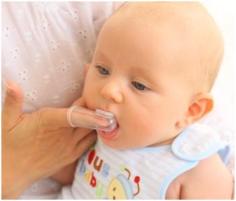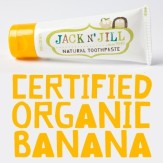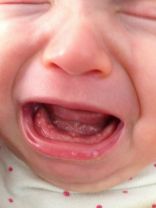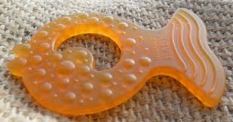A couple weeks ago my baby boy grabbed my finger and started gnawing on the knuckle (nothing new there). Only this time I felt a sharp little scratch, the beginnings of a tooth! While obviously excited at having reached another milestone, I was also a little apprehensive. Teething can cause grumpiness and restlessness. And now we also had to think about dental hygiene for babies! A kind of bizarre thought.
In NZ, when you take your baby for their 5 month community nurse checkup, you are gifted a baby toothbrush and toothpaste from one of their ‘sponsors’, one of the large toothpaste/brush companies (that shall remain nameless). I get it, Plunket need to get money from somewhere. They operate on a small budget and do great work for the community. However, being a bit skeptical, I tend to question the motives behind these types of commercially driven donations. I also wasn’t too keen on using the bright blue, sparkly toothpaste on my baby (which incidentally said from 6 years up on it), as well as a bulky plastic toothbrush in his mouth. It just seemed wrong. 
Luckily, on a recent trip to Aus I had spotted a natural brand of baby dental products, called Jack n Jill, and had (seeing a bird in hand) snapped up some paste and a set of little silicone finger brushes. So I busted these out the other day, and turns out they are really easy to use! Easier than I imagine trying to use a normal toothbrush on a baby would be. They have soft sort of bristles on one side and bumps on the other to massage baby’s gums little. The only challenge was trying to prevent him chewing on it too much, ha! The organic banana flavoured toothpaste was also a hit (after some initial confused looks from the boy-o), and ended in a lot of lip-smacking.

I have looked to see whether they are available in NZ, and luckily you can get them at a number of online retailers as well as at Commonsense Organics. Yay! Here’s to establishing healthy little teeth without unnecessary chemicals! Incidentally, since I’ve been breastfeeding, I’ve also switched to a natural toothpaste brand. Did you know some big brand toothpastes have an antibacterial agent in them called triclosan, which has been shown to have hormone altering effects in animals (according to the USFDA)? Although not known to be unsafe in humans, it’s still enough to put me off, and traces of this compound do make their way into breastmilk. Erring on the side of caution, I’m choosing to try to avoid products containing this ingredient.
 So the little fella is about five months old now,
So the little fella is about five months old now,
